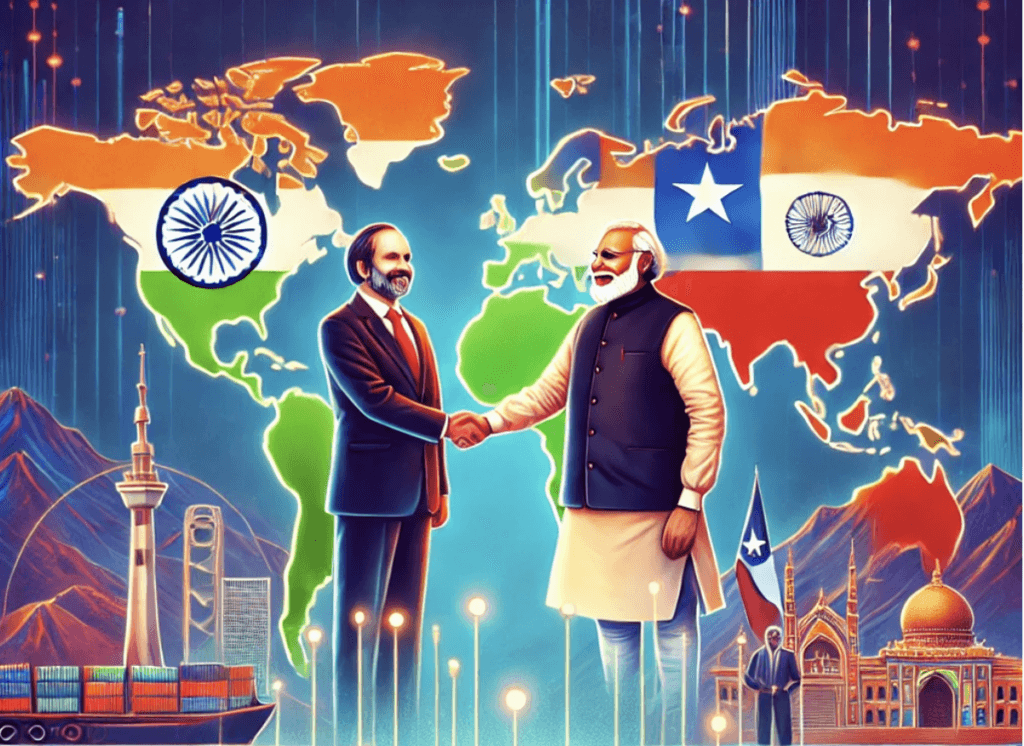Introduction
In a significant diplomatic overture, Chilean President Gabriel Boric recently emphasized Prime Minister Narendra Modi’s expansive global partnerships, stating, “PM Modi has ties with all… I want to make Chile a hub for India in the region.” This declaration underscores Chile’s ambition to deepen its strategic and economic collaboration with India, positioning itself as India’s gateway to Latin America. As both nations seek to leverage mutual strengths, this partnership could redefine trade, technology, and sustainability ties across continents.

India-Chile Relations: A Foundation of Trust
India and Chile share a 70-year diplomatic relationship, anchored in shared democratic values and growing economic synergy. Under PM Modi’s leadership, India has prioritized expanding its footprint in Latin America, with Chile emerging as a key partner. Key milestones include:
- Preferential Trade Agreement (PTA): Signed in 2017, boosting bilateral trade in pharmaceuticals, machinery, and copper.
- Diplomatic Engagements: PM Modi’s 2019 meeting with then-Chilean President Sebastián Piñera and recent virtual summits.
- Trade Growth: Bilateral trade surged to $3.1 billion in 2023, with Chilean copper and Indian pharmaceuticals driving exchanges.
Why Chile Wants to Be India’s Regional Hub
Chile’s strategic location, political stability, and pro-business policies make it an ideal partner for India in Latin America. President Boric’s vision focuses on:
- Geopolitical Advantage: Chile’s access to Pacific trade routes and membership in regional blocs like the Pacific Alliance.
- Resource Synergy: India’s demand for lithium (critical for EVs) aligns with Chile’s status as the world’s largest lithium producer.
- Renewable Energy Collaboration: Joint ventures in solar and green hydrogen to meet climate goals.
Key Pillars of the India-Chile Partnership
1. Trade & Investment
- Chile seeks Indian investments in mining, agriculture, and tech startups, while India eyes Chilean lithium and wines.
- Target: Doubling bilateral trade to $6 billion by 2030 through expanded PTA terms.
2. Technology & Innovation
- Collaboration in AI, fintech, and space tech (ISRO’s satellite data sharing with Chilean agencies).
3. Climate Action
- Joint initiatives in green energy, including Chile’s National Green Hydrogen Strategy and India’s Solar Alliance.
4. Cultural Ties
- Yoga and Ayurveda festivals in Chile, coupled with student exchange programs.
Challenges to Overcome
- Logistics: High shipping costs and lack of direct air/sea connectivity.
- Regulatory Hurdles: Differing standards for pharmaceuticals and agro-products.
- Competition: China’s entrenched presence in Latin America’s infrastructure and mining sectors.
The Road Ahead
President Boric’s push to transform Chile into India’s hub aligns with PM Modi’s “Global South” outreach. Upcoming collaborations include:
- A proposed India-Chile Free Trade Agreement (FTA).
- Chilean lithium supply chains for India’s EV manufacturing ambitions.
- Tech parks in Santiago co-developed by Indian IT giants.
Conclusion
As PM Modi’s diplomatic acumen strengthens India’s global alliances, Chile’s hub ambition offers a win-win proposition. By bridging Latin America’s resources with India’s innovation and market scale, this partnership could set a template for South-South cooperation—driving growth while addressing shared challenges like climate change and equitable development.
Pingback: "From Adidas to Puma: New CEO Faces Uphill Battle to Rescue
Pingback: "Piyush Goyal to Startups: Ditch Ice Cream & Chips, Focus on